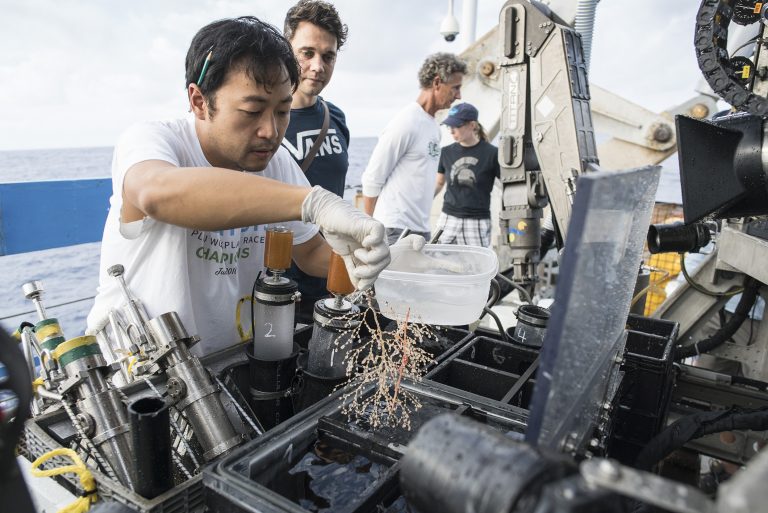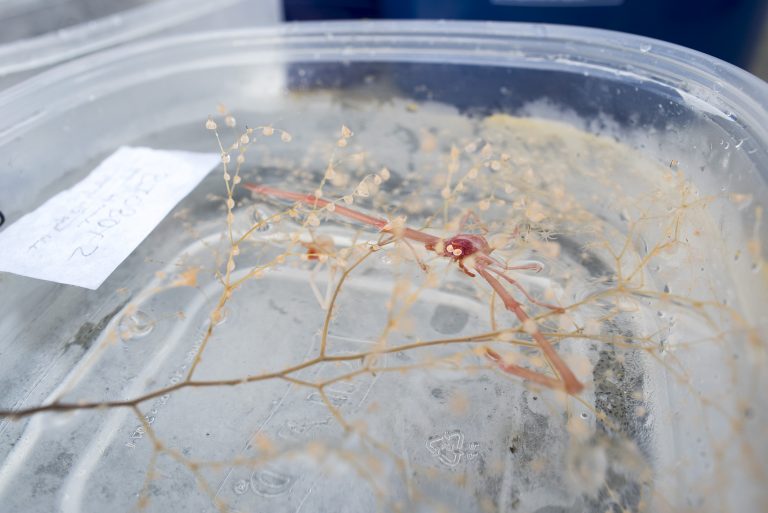The scientists await inside the garage as the deck crew clears the aft deck and the ROV team runs their post-dive checklist, making sure SuBastian is in top shape for the next day. Once they receive the OK, the experts surround the ROV in a predetermined choreography, retrieving the samples efficiently, before the out-of-water environment can degrade them.
Dr. Walter Cho, Deep-sea Biologist from Point Loma Nazarene University, examines a suction sampler jar full of shrimp. He works with Dr. Tim Shank from the Woods Hole Oceanographic Institution, who is participating in real time from shore. Dr. Shank’s research aims to identify how the changes in the geology and chemistry have impacted or correlate with the resident biology. The Underwater Fire expedition offers a valuable opportunity to do so, since the time scales at active submarine volcanoes are very rapid. One of the objectives of this research cruise is to understand how the development of biological communities in these discreet volcanoes differs from those at mid-ocean ridges. Since the Mata Volcanic Group is formed by several closely distributed volcanoes – each one in a different stage of evolution – the area really is a unique natural laboratory.
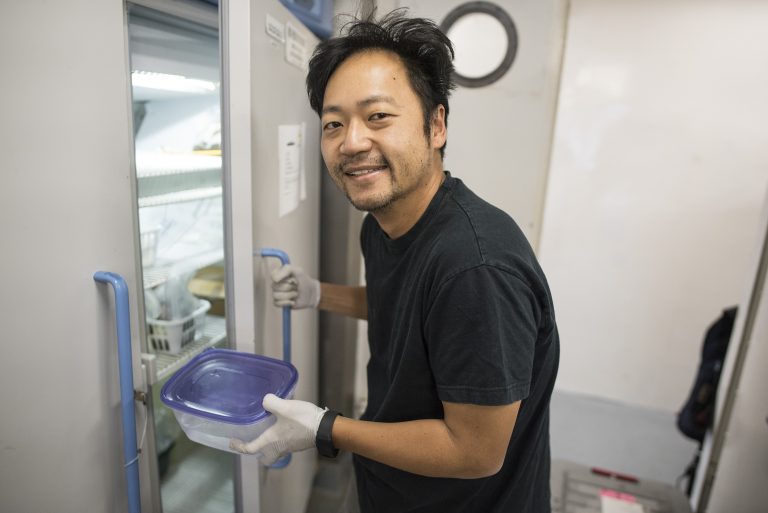
How Does It All Begin?
This is one of the big questions. Not only in these hydrothermal systems but throughout the oceans: How are new habitats colonized by different life-forms? How do the organisms get there? “For vent communities there are a couple of ideas,” explains Dr. Cho. “Maybe there is just a constant supply of larvae in the water column because they have to be opportunistic and they must be able to settle in any new sites that may appear. But predominantly they might be just resettling in sites that already exist. Is it the dynamics of the seafloor? The hydrodynamics? The current patterns? It is probably a combination of all of them.”
The question seems to fit West Mata very well. The team has discovered that the locations where they find biological communities have shifted over time. In their previous expeditions, the more diffuse flows with large densities of shrimp were in the Northern part of West Mata summit’s ridge. Presently the numbers have decreased dramatically, and the team is finding more shrimp on the Southern side of the ridge.
The variation is likely due to the combination of the shifts in the distribution of diffuse flow (due to changes in subseafloor plumbing), changes in the chemistry of the fluids, currents on account of the formation of new geological features, and also the appearance of new sources of the chemicals that biological communities rely on. In short, shifts in volcanic features may be affecting the spots where the hydrothermal flow is pouring out of the seafloor, which impacts currents and the distribution of organisms.
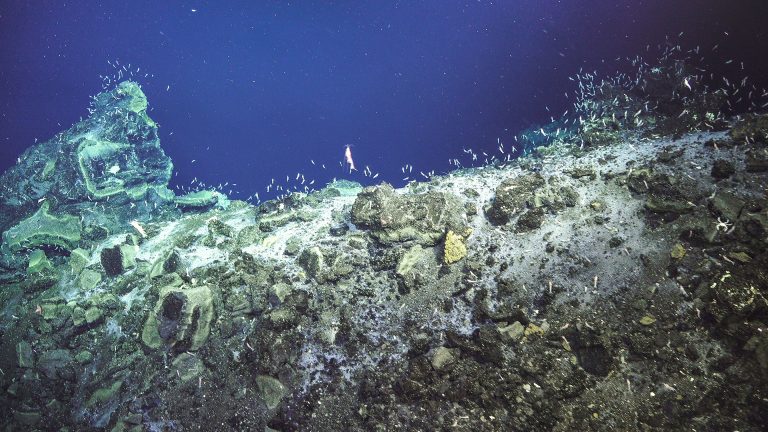
Space vs Time
There is also a question of temporal changes. So far the spatial changes in the distribution of biological communities are quite apparent, but the biologists are also interested in potential variations over time.
Since this place changes so quickly, how can the experts detect changes in the life-forms through time? “With increasing technology we have increased resolution. We can look at the entire genome of organisms. We can study specific molecular markers that can be specific of individuals or sub-populations,” explains Dr. Cho. Yet in order to get the samples to the lab ashore – and be able to study possible changes in the communities over time – time itself presents a challenge. Once SuBastian comes back on board, Dr. Cho needs to move quickly.
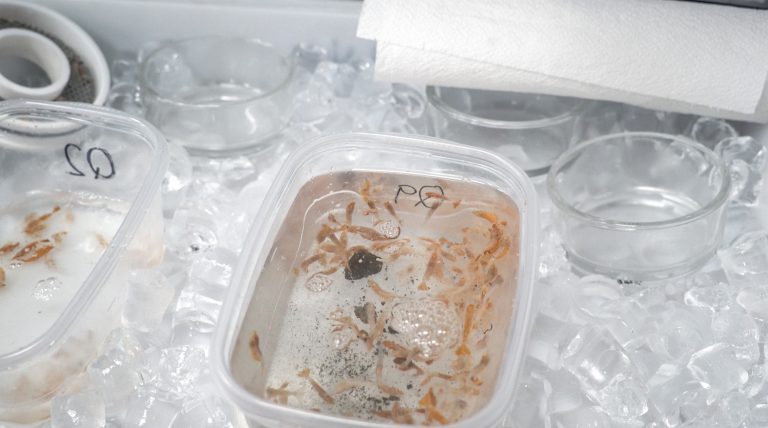
DNA and tissue will degrade over time, this is why the deep-sea biologist needs to be the first one to retrieve their samples. When ROV SuBastian is on deck, they makes sure to get the organisms into a cold environment as soon as possible. Deep-sea vent organisms are more likely to be degraded from temperature shifts than from the change of pressure after traveling all the way up from the seafloor. The sub-zero freezer in Falkor’s wet lab preserves the DNA and molecules.
Back on land, the samples will be analyzed in different ways. One of them is protein expression: “Protein expression gives us an idea of what the animal is actually doing, what genes are being expressed, and therefore what proteins are being made. Some studies show that certain proteins are important for particular conditions. For instance if the organisms are stressed, or if they are carrying out some processes like chemosynthesis,” he explains. This information can offer interesting insights, because even if the team finds the same species in different diving sites, the organisms may be living in different chemical conditions, so on later analysis the experts could find different levels of expressions of different genes.
Underwater volcanic systems are likely to play a significant role in a part of the ocean’s productivity. This research might even shed some light over the community’s trophic interactions. The experts are assuming this hydrothermal system is a chemosynthetic environment, but they won’t be sure who is part of that food web until they start analyzing the isotopes of tissues to see if that is true. Today, the teams have taken another step in the right direction towards understanding the links between underwater fire and life on our planet.
